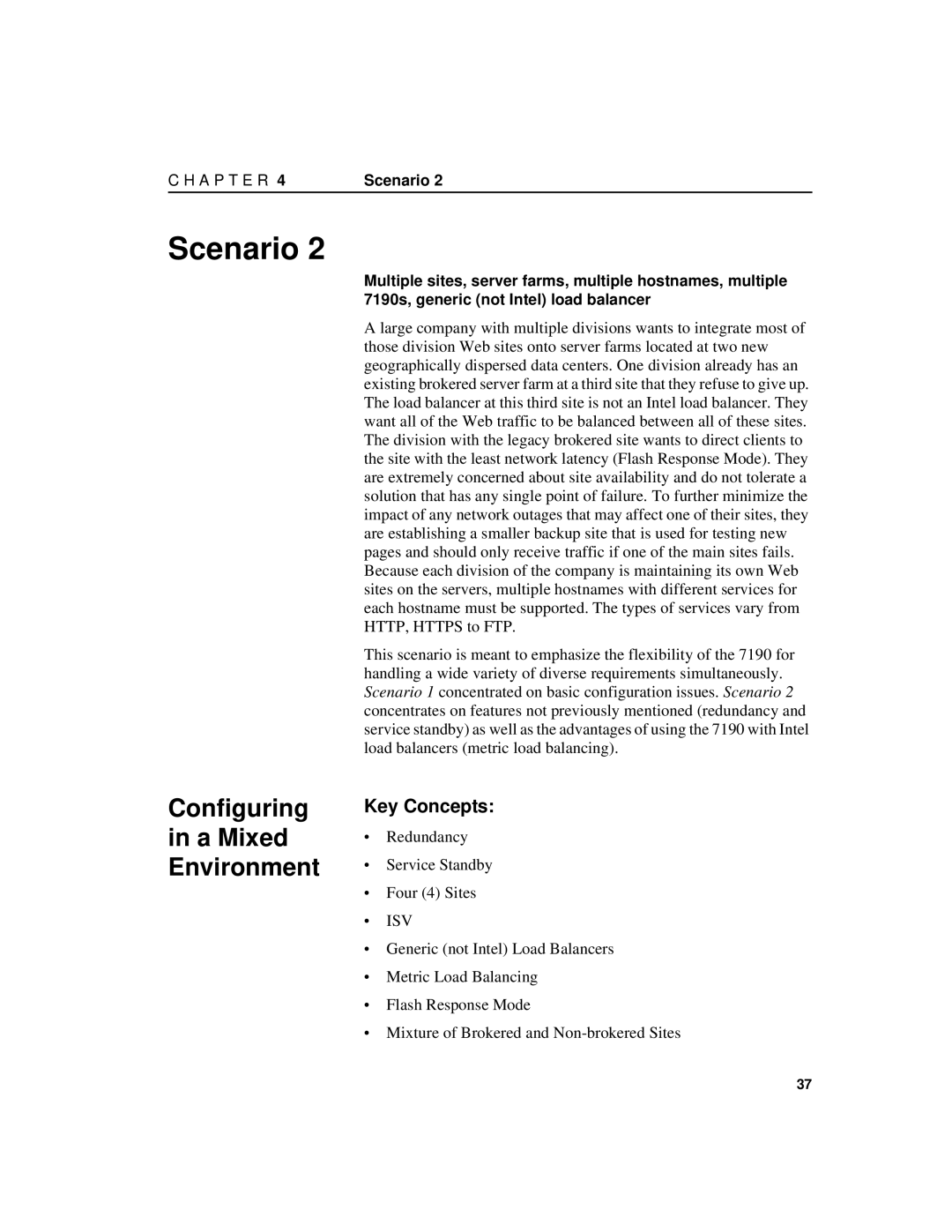C H A P T E R 4 | Scenario 2 |
Scenario 2
Multiple sites, server farms, multiple hostnames, multiple 7190s, generic (not Intel) load balancer
A large company with multiple divisions wants to integrate most of those division Web sites onto server farms located at two new geographically dispersed data centers. One division already has an existing brokered server farm at a third site that they refuse to give up. The load balancer at this third site is not an Intel load balancer. They want all of the Web traffic to be balanced between all of these sites. The division with the legacy brokered site wants to direct clients to the site with the least network latency (Flash Response Mode). They are extremely concerned about site availability and do not tolerate a solution that has any single point of failure. To further minimize the impact of any network outages that may affect one of their sites, they are establishing a smaller backup site that is used for testing new pages and should only receive traffic if one of the main sites fails. Because each division of the company is maintaining its own Web sites on the servers, multiple hostnames with different services for each hostname must be supported. The types of services vary from HTTP, HTTPS to FTP.
This scenario is meant to emphasize the flexibility of the 7190 for handling a wide variety of diverse requirements simultaneously. Scenario 1 concentrated on basic configuration issues. Scenario 2 concentrates on features not previously mentioned (redundancy and service standby) as well as the advantages of using the 7190 with Intel load balancers (metric load balancing).
Configuring
in a Mixed
Environment
Key Concepts:
•Redundancy
•Service Standby
•Four (4) Sites
•ISV
•Generic (not Intel) Load Balancers
•Metric Load Balancing
•Flash Response Mode
•Mixture of Brokered and
37
